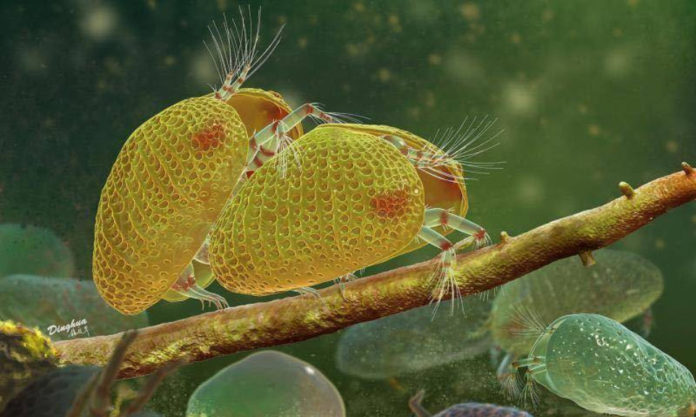Scientists at the Nanjing Institute of Geology and Paleontology have made yet another breakthrough in their discovery of the world’s oldest animal sperm, found inside a crustacean trapped in a piece of Myanma amber, in collaboration with Queen Mary University of London.
The ostracod is the crustacean in question, an invertebrate animal present in thousands of species on Earth for the past half billion years. They are found in our world’s oceans, lakes and rivers.
Finding a ostracod fossil is commonplace. Finding one with their internal organs and alien-like appendages intact is rare. Discovering all this plus sperm in a female is a very big deal.
Previously, the oldest examples of animal sperm were around 17 million years old. Nanjing’s discovery, on the other hand, dates back 100 million years.
The piece of amber in which the ostracods were found is 17.5 mm long, 13.5 mm wide and 4 mm thick. Inside, the largest ostracod was just 0.59 mm long; the smallest 0.24 mm, reports the Yangtze Evening News.
Led by Dr. Wang He of the Chinese Academy of Sciences branch in Nanjing, to which the Nanjing Institute of Geology and Paleontology belongs, the research team named the new species of crustacean they discovered, “Myanmarcypris hui”.
The team retrospectively predict that the animals had sex shortly before becoming entrapped in the tree resin that became Myanma amber.
Most remarkable of the find is that the male ostracod was producer of “giant sperm”. Unlike the males of most animals that usually produce tens of millions of tiny sperm, ostracods produce only a few sperm that are longer than the animal itself. Such necessitated the invertebrate to evolve specially-adapted organs to facilitate insemination.
By employing X-ray microscopy, computer-aided 3D reconstructions of the ostracods were created, showing them embedded in the amber and revealing incredible detail.
In an article published by Queen Mary University of London, Dr. Wang said, “The results were amazing; not only did we find their tiny appendages to be preserved inside their shells, we could also see their reproductive organs”.
Professor Dave Horne, a co author on a study of the discovery, says, “Analyses of fossil ostracod shells are hugely informative about past environments and climates, as well as shedding light on evolutionary puzzles, but exceptional occurrences of fossilised soft parts like this lead to remarkable advances in our understanding”.
The team’s findings have been published in the research paper, ”Exceptional preservation of reproductive organs and giant sperm in Cretaceous ostracods” (Wang H, Matzke-Karasz R, Horne DJ, Zhao X, Cao M, Zhang H, Wang B; 2020).









